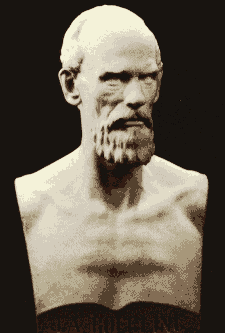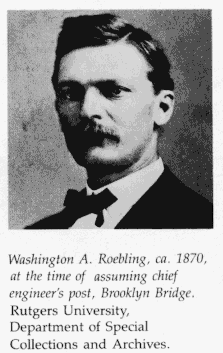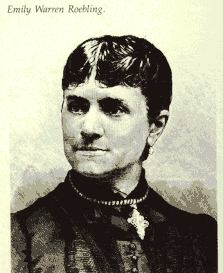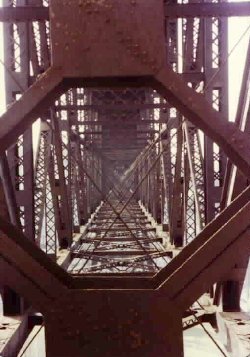Roebling
Today, we meet the father and son who built the Brooklyn Bridge. The University of Houston's College of Engineering presents this series about the machines that make our civilization run, and the people whose ingenuity created them.
For me, the story of John Roebling begins in Kentucky, not far from where I used to live. On Sunday afternoons my wife and I would take our kids to see Old High Bridge over the Kentucky River. A plaque credits John Roebling with having started this old bridge in 1853. Actually, the bridge there today has been entirely reconceived. Still, the glorious spider web of steel emerging out of the quiet hilly isolation around it powerfully evokes Roebling's sense of design.
Roebling was born in Prussia in 1806. He studied engineering in Berlin, where the philosopher Hegel told him that America was "a land of hope for all who are wearied of the historic armory of old Europe." Roebling liked the sound of that, and he moved here in 1831.
First he worked on canal equipment. That led him to invent wire cable to replace the hemp used for tow-ropes. Small suspension bridges were gaining in popularity, and Roebling saw that his cables could be used to transform them into something very grand. His first contract was to bridge the Monongahela River with an 8-span, 1500-foot-long bridge. It was finished in 1846.
But the bridge that really established Roebling was a suspension bridge over Niagara Falls, finished in 1855. He followed this with the Cincinnati Bridge over the Ohio River. It was a single span, more than a thousand feet long, that he finished in 1866. It's still in use today.
While the Cincinnati bridge was just getting under way, Roebling embarked on his greatest feat -- a single-span suspension bridge, 1600 feet long -- from Manhattan to Brooklyn. He was hotly opposed -- by ferryboat operators who stood to lose money and by citizens who thought it couldn't be done.
He had backing by 1869; but then, while he was surveying the site, his foot was crushed by a loose piling and he soon died of tetanus. His son, Washington, took up the work. And a terrible task it was -- plagued by accidents, deaths, and the paralyzing caisson disease. Caisson disease was caused by the pressure variations in the huge caisson piers in the East River. In 1876 it caught up with Washington Roebling. No longer able to walk, or even to talk, he kept on supervising the work from the window of a house in Brooklyn Heights. Finally, in 1883, he watched from his window while Grover Cleveland, Chester Arthur, and the citizens of New York opened the longest suspension bridge in the world.
It took the vision and drive of two generations of Roeblings to make the Brooklyn Bridge -- and it cost them their lives. The bridge, by the way, has a graceful fan-like cross-bracing that we all recognize. That cross-bracing is a pure Roebling touch. And it's what identifies the Brooklyn Bridge as a symbol of New York City today.
I'm John Lienhard, at the University of Houston, where we're interested in the way inventive minds work.
(Theme music)
Vogel, R.M., Building Brooklyn Bridge: The Design and Construction, 1873-1883. Washington, D.C.: The National Museum of American History, Smithsonian Institution, 1983.
Vogel, R. M., Roebling's Delaware & Hudson Canal Aqueducts. Washington, DC: Smithsonian Institution Press, 1971.
Vogel, R. M., Designing Brooklyn Bridge. Annals of the New York Academy of Sciences, Vol. 421, 1983, 3-39.
This episode has been greatly revised as Episode 1488.

(From the Vogel reference above)
Bust of John Roebling - The bust belongs to Rensselaer Polytechnic Institute

(From the Vogel reference above)
Washington Roebling

(From the Vogel reference above)
Emily Roebling

(From the Vogel reference above)
The Brooklyn Bridge under construction in 1881

(Photo by John Lienhard)
Old High Bridge in Kentucky, as it exists today